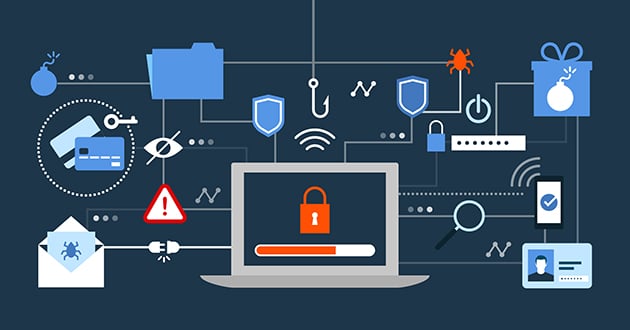New Cybersecurity Threats to Be Aware Of

With cyber threats continuing to evolve, cybersecurity is needed now more than ever. Cybercriminals find new techniques and tools to invade computers as technology increases in sophistication and complexity. Exploiting vulnerabilities is at the heart of cybercrime. Digital security measures should’t be stagnant because new threats arise every year. Protection is needed against the following, which are five of the newest threats to businesses cybersecurity.
#1 Malware Introduced through Software
Software updates are increasingly used by cyber-criminals to deliver malware. Disrupting, damaging, and/or gaining unauthorized access to a computer system is the purpose of malware. Scammers pose as a familiar, trusted source as they switch out legitimate updates for malware. The attacks come through direct ownership, direct compromise, or by hijacking an IP address or domain from which updates are downloaded. This variety of cyber-attacks increased to once monthly in 2017, compared to once quarterly the year prior.
An auto-update feature, which has widespread use, is the most common way these breaches occur. Auto-updates can result in the rapid distribution of malware that goes largely unnoticed. What further complicates this new type of cyber threat is that updating software regularly is considered good practice for cybersecurity.
#2 Cabals of Cybercriminals Take Aim at U.S. Companies
Many cybercriminals operate as part of a collective group targeting specific organizations with motives that include sabotage, espionage, and financial gain. Entire governments and lucrative companies have been cyber-attacked by groups with names such as Dragonfly, Turla, and Butterfly. After gaining access to a system through, for example, a targeted phishing campaign, the stolen credentials are shared for open network exploits.
#3 Cryptocurrency Attacks
Coin-mining has caught on with cybercriminals. In 2017 alone, an increase in the detection of coin miners rose by 8,500%. Hackers are able to steal the cloud CPU usage or processing power of a device using a few lines of code; and from there, they mine for cryptocurrency. Such intrusions are often costly in that they infect devices and cause slower performance and overheated batteries. Devices sometimes become completely unusable.
#4 Revised Use of Ransomware
Ransomware was previously used for purposes of extortion but with diminishing success. Cybercriminals have adjusted their use of ransomware so that it is now utilized as a way of disguising other types of cyber-attacks. The strategy is, first, to get IT administrators distracted with their response to a ransomware attack. Secondly, malware is covertly installed, such as remote access “trojans” or keyloggers, and then used for financial gain, to steal data, or to spy.
#5 Internet of Things (IoT)
Weak points are created for businesses and individual consumers through devices connecting through the Internet of things (IoT). Architectural flaws such as inadequate cybersecurity are inherent in IoT, studies show. Mobile devices are no less vulnerable to cyber threats than the largest companies computer systems and networks. Detection of mobile malware increased by 54% in 2017. Alarmingly, virtually 100% of the cyber attacks were hosted on trusted third-party apps. More than 90% of enterprise and consumer devices aren’t protected by a passcode.
For reliable cybersecurity against old and new cyber threats, trust the industry experts at NuMSP.
Share this Article